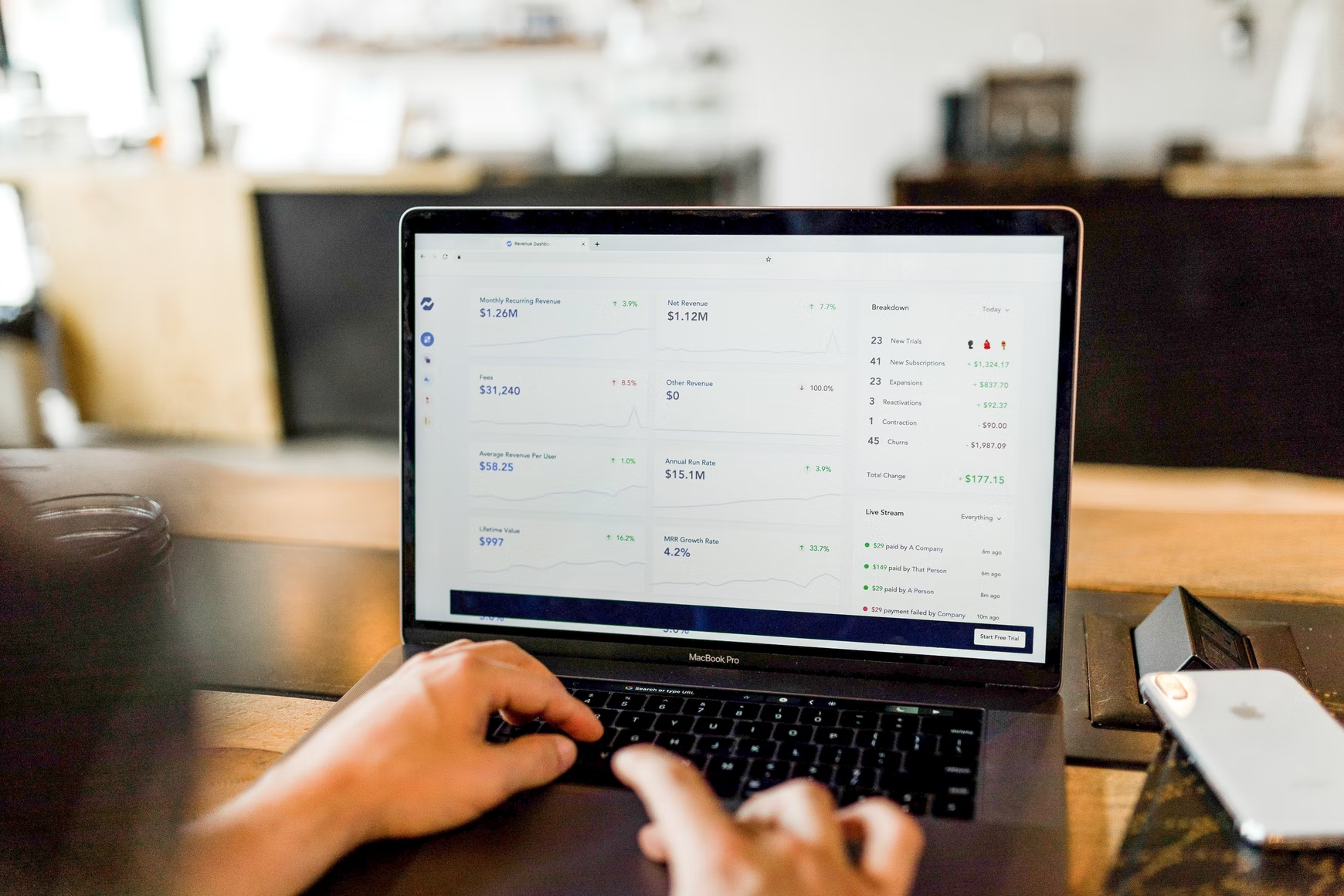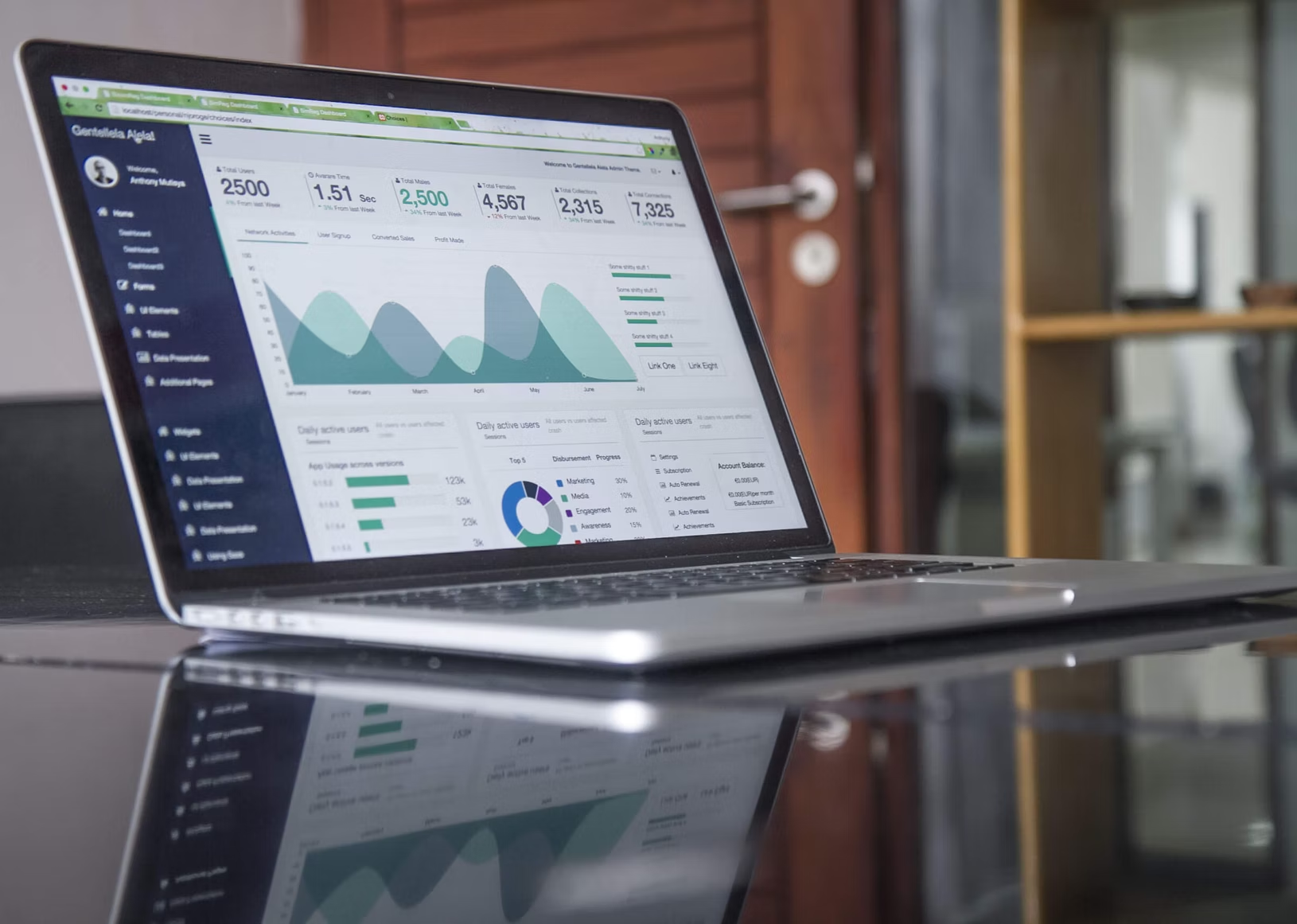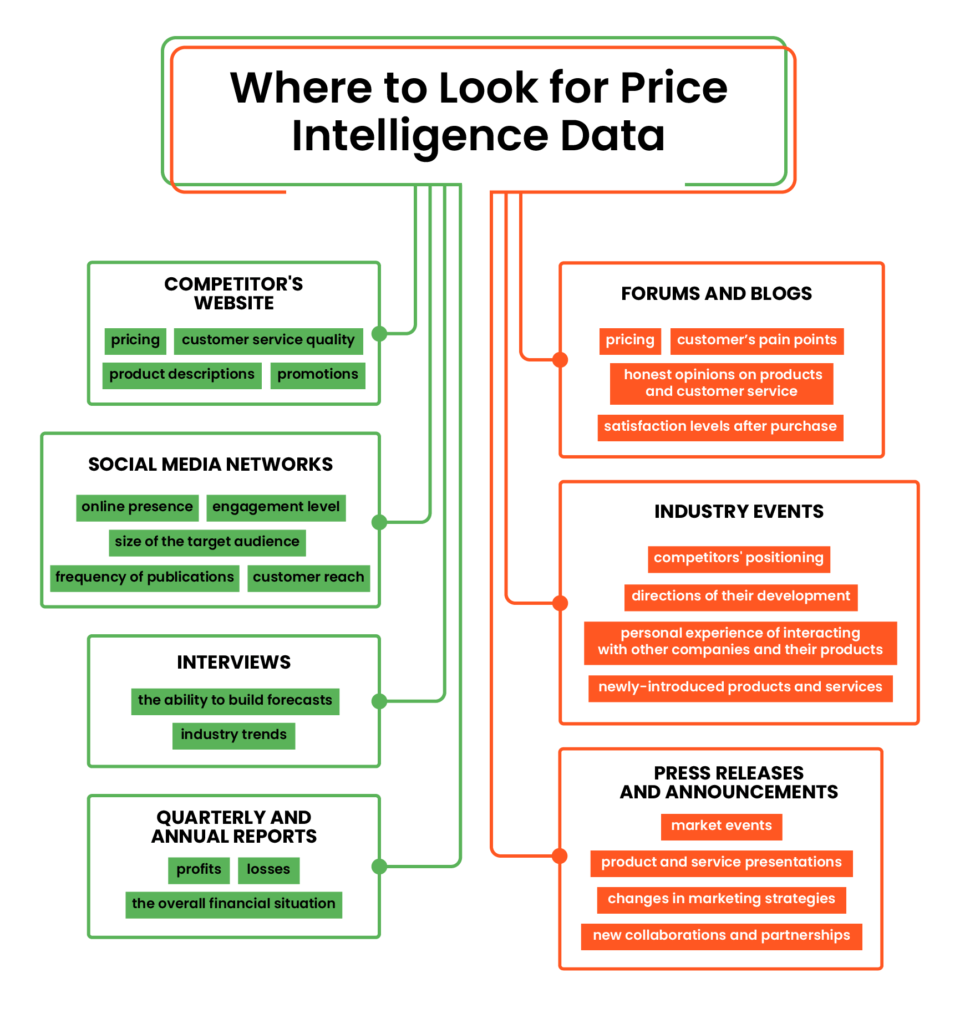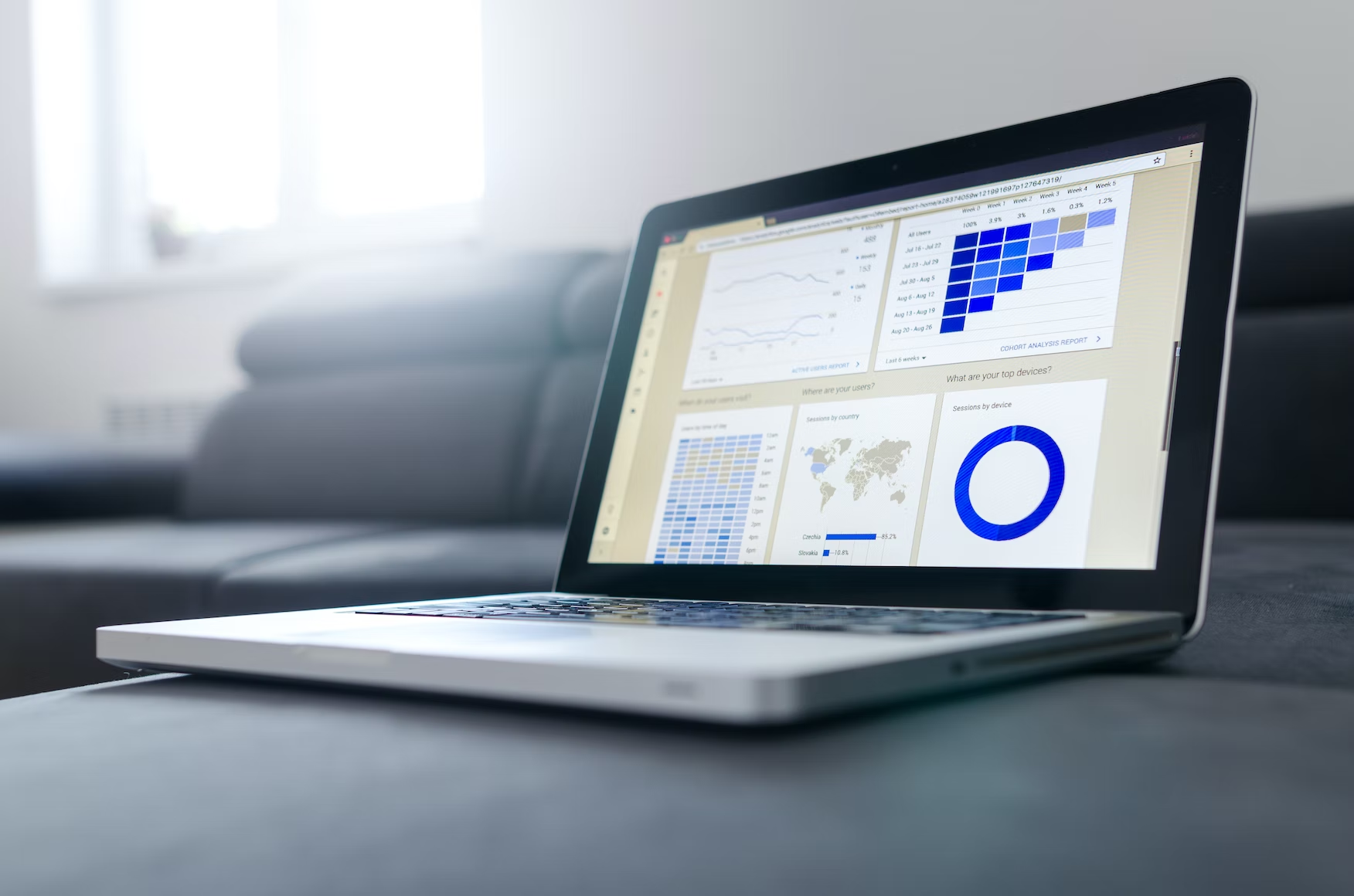Competitive pricing intelligence, also commonly referred to as price intelligence, is a business activity that involves collecting and analyzing information about direct competitors, as well as competitive products and services, in order to gain or maintain a competitive advantage in the market.
It is a pricing methodology in which an online retailer defines their own pricing strategy depending on the real market situation and according to several parameters or conditions set in accordance with their business goals. In some cases, competitive price monitoring also extends to similar products, as well as promotions and discount codes.
Join us as we explore the subject of competitive pricing intelligence in further detail – only then will you be able to make informed pricing decisions and develop a winning pricing strategy.

Goals and Objectives of Competitive Pricing Intelligence
The main goal of competitive pricing intelligence is conducting market research and developing a pricing strategy by understanding what their competitors are doing and how they might react to changes in pricing. By gaining meaningful insights into competitor pricing strategies, businesses can develop their own pricing strategies that will help them win market share and improve profitability.
There are a number of different objectives that businesses can hope to achieve through competitive pricing intelligence, such as:
- understanding the pricing strategies of direct competitors and how they might change in the future,
- identifying price discrepancies between your products and those of your competitors,
- benchmarking your prices against those of your competitors,
- uncovering new pricing strategies that their direct competitors are using and analyzing their impact on your business
- developing a pricing strategy that will help you gain a competitive advantage
- identifying opportunities to undercut the competition and win market share,
- monitoring market trends and changes in the competitive landscape and reacting accordingly,
- understanding the elasticity of demand for your products or services.
Another important thing price intelligence refers to is price sensitivity. Price sensitivity is the degree to which a customer is willing to accept a change in the price of a product or service. It helps businesses understand how their prices compare to competitors’ prices and how sensitive their customers are to changes in price.
There are several methods that businesses can use to measure price sensitivity, such as conjoint analysis, Van Westendorp’s Price Sensitivity Meter (PSM), and the Gabor-Granger method.
Want to get set up with competitor monitoring, price tracking and even more?
Book a free demo to monitor any e-commerce competitor pricing and get instant info of important price movements and more!
Why Is Price Intelligence Important?
In today’s competitive marketplace, businesses cannot afford to make pricing decisions without having a deep understanding of what their competitors are doing and how their customers might react to price changes.
Price intelligence helps businesses understand their price position in the market and develop pricing strategies that will help them win market share. By understanding competitors’ prices, businesses can develop their own pricing strategies that will help them increase profits.
In addition, price intelligence can help businesses benchmark their prices against those of their competitors and make sure they are not overcharging or undercharging for their products and services. This will allow them to come up with an ideal price for a product or service.
Competitive price intelligence can also help businesses understand how sensitive their customers are to changes in price and make sure they are not alienating their customer base with sudden price changes.
However, in order to use price intelligence to their advantage, businesses need to stick to a few critical steps, including:
- Collecting accurate and up-to-date data.
- Analyzing the pricing data correctly.
- Using the right price intelligence tools and technologies to gain meaningful insights into their data.
- Making decisions based on sound business principles and not just on price.
The latter means businesses need to make sure they are taking into account all of the factors that affect their business, such as costs, customer demand, customer lifetime value, and competitive pressure.

How to Develop a Price Intelligence Strategy?
Gathering competitive pricing intelligence can be a time-consuming process, but it’s definitely worth all the effort. The competitive pricing intelligence process typically consists of four main steps:
- Data collection.
- Data analysis.
- Developing a strategy in accordance with gained insights and recommendations.
- Implementation and monitoring.
Data collection, or data mining, is the first step in the process and requires you to identify competitors and then gather data on their products’ prices, as well as other relevant information such as promotions, discounts, and product offerings. This data can be collected manually or through the use of pricing software.
Types of Data Used in Competitive Pricing Intelligence
There are a number of different types of data that businesses can use in competitive pricing intelligence, including:
- Sales data. Price and availability tracking allows you to understand the performance of your own products or services as well as those of your competitors. Additionally, promo & sales monitoring helps to analyze the availability of competitors’ products in all sorts of promotions.
- Financial data. This includes information about a company’s revenue, profitability, and costs. It can be useful when trying to understand a competitor’s pricing strategy and how it affects their bottom line.
- Product data. Product description analysis and information about the features and specifications of your own products or services as well as those of your competitors allows you to go further into the nuances and find weaknesses that can be exploited.
- Consumer data. This includes information about consumer behavior, such as what products or services they are interested in and how much they are willing to pay for them.

Where To Look For Price Intelligence Data?
Competitive intelligence involves gathering information from many different sources, including industry events and conferences, expert interviews, and public reports. Here are the most common ways to get the data you need:

- Competitor’s website – one of the primary sources of information used for competitive intelligence. The site provides information on pricing, promotions, customer service quality, product descriptions, and more. With the help of SEMRush and Ahrefs, you can also conduct SEO audits, track search engine rankings, and study the top keywords used by competitors.
- Social media networks. Analyzing your direct competitors’ business accounts on Instagram and Facebook allows you to learn more about their online presence, considering the frequency of publications, customer reach, level of engagement, as well as size of the target audience.
- Forums and blogs. Monitoring third-party resources allow you to detect main pain points that concern potential buyers and customers and turn them into price points once you know how to solve these issues. Here, you can also look for honest opinions on your competitors and their products, quality of service, and satisfaction levels after purchase.
- Interviews. This market research method implies the study of competitors by interviewing customers, industry experts, and opinion leaders. This way, you can learn about industry trends and build forecasts regarding market expansion and your business’s needs.
- Events. Exhibitions, conferences, seminars, and other events help to gather additional information about competitors’ positioning, directions of their development, as well as newly-introduced products and services to the market. This also helps you to get personal experience of interacting with other companies and their products.
- Press releases and announcements. Keeping track of competitors’ news helps to keep abreast of market events, product and service presentations, changes in marketing strategies, as well as new partners, collaborators, suppliers, and distributors.
- Quarterly and annual reports. They provide you with information on profits, losses, and the financial situation of your competitors. You can see the reports on the companies’ official websites (usually, on a page that contains information for investors) or special resources like AnnualReport.com.
In order to stay informed and adapt quickly to changes in the market, it is crucial to know what your competitors are doing. Only then will you be able to set SMART goals and move step by step towards competitive prices.
Data analysis is the second step and involves analyzing the collected data to uncover actionable insights. At this stage, retailers can use price intelligence to better understand their price position relative to their competition and see how to adjust prices to support their business objectives.
Want to get set up with competitor monitoring, price tracking and even more?
Book a free demo to monitor any e-commerce competitor pricing and get instant info of important price movements and more!
Competitive Pricing Intelligence Tools for Insightful Data Analysis
There are various types of software available that can help businesses with the process of competitive price intelligence. Some of these tools focus on data collection, while others on data analysis.
Data analysis tools typically use algorithms to analyze data and provide insights and recommendations. Some data analysis tools also include features for data visualization, such as heat maps and charts. Some popular data analysis tools that can be used for competitive price intelligence include Google Sheets, Excel, Tableau, and Sisense.
However, other popular tools include:
- Price tracking software. This type of software helps businesses track the prices of their competitors’ products and services in real-time. There are also tools that enable tracking the availability of products in stationery stores or exclusive product monitoring.
- Cross-sell monitoring tools. Cross-selling technique allows you to keep the customers with your brand and make sure that your accessories are offered with relevant products.
- Web scraping tools. This technique involves extracting data and content from websites, which comes in handy when researching competitor websites.
- Market research tools. This involves conducting surveys, interviews, and focus groups to gather information about customer perceptions of prices.

With the help of these tools, the data analysis stage flows seamlessly into the next one, as professionally analyzed data will provide you with valuable insights and recommendations.You can use them to develop a strategy that will allow you to gain a competitive advantage and maximize your profit margin.
Last but not least, retailers should not only implement a strategy but also monitor competitors’ prices on a regular basis and make changes as needed. Businesses need to be prepared to adjust their pricing strategies as their competitors’ strategies change.
The most important thing to remember is that price intelligence is not a one-time exercise. It is an ongoing process that needs to be monitored on a regular basis.
The Bottom Line

Competitive pricing intelligence is a pricing methodology that involves collecting and analyzing information about direct competitors, as well as competitive products and services, in order to gain or maintain a competitive advantage in the market.
The main goal of competitive pricing intelligence is to help businesses make better pricing decisions by understanding competitor prices and how customers react to changes in pricing. By gathering competitive pricing intelligence and properly analyzing it, businesses can develop their own pricing strategies that will help them win market share and improve profitability.

Manager with experience in leading team of software developers and testers during implementation of internal and external IT projects. Ceo of Brandly360.com.


